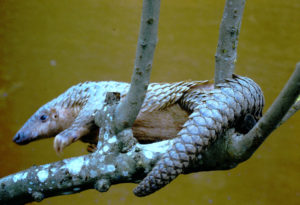
Working as a zoologist in Southeast Asia for three years exposed me to a remarkable variety of exceedingly strange and interesting plants and animals. The tropical rainforest of Malaysia harbors a biodiversity of astounding proportions. There are lizards, frogs, and snakes which can glide from tree to tree. Here, growing upon a parasitic plant known as Rafflesia, can be found the world’s largest flower (3 ft. in diameter). Upon the tidal flats roam fishes which spend much of their time out of the water (see my blog 31. Of Course a Fish Can’t Climb a Tree!).
Malaysia’s forests are prowled by tigers, leopards and smaller, secretive felines such as the fishing cat and golden cat. Living here too are some of SE Asia’s last remaining elephants. The elusive Malayan tapir and the odd little ungulate known as the mouse deer also call the rainforest of Malaysia home. Known as sang kancil in Malayan folklore, the mouse deer is the world’s smallest ungulate. It stands only twelve inches at the shoulder and weighs about the same as a rabbit.
Endemic to Malaysia is a fascinating assemblage of serpents including venomous pit-vipers, cobras, kraits, coral snakes, and sea snakes. Among the insects are mantids that resemble orchids, bees which do not sting, and orthopterans which look extraordinarily like plants. Inhabiting the seas that gently splash upon Malaysia’s 3000 miles of shoreline are reef sharks and hammerheads, mantis shrimp powerful enough to break aquarium glass, venomous stonefish and cone shells, giant clams, and beautiful clown fish.
As you can see, picking a champion peculiarity from this large cast of characters is challenging in the extreme. But, if forced to do so, I might have to choose the pangolin as the oddest creature I encountered while living in Malaysia. There are eight species of pangolins (aka scaly anteater) in the world, the one living in Malaysia is known variously as the Sunda pangolin, Malayan pangolin, or Javan pangolin. Other species occur in India, the Philippines, and Africa.
Around Serdang, Malaysia it was well-known that I would happily accept snakes, frogs, lizards and pretty much any other kinds of animals locals might run across. Some I might need as museum/teaching specimens at the university. Others I would photograph and observe for a period of time before releasing them once again. So it was that one of my lab assistants presented me with a pangolin that had been caught near campus.
What a bizarre looking little mammal! About the size of a cat it was but, instead of a characteristic coat of soft fur, its body was covered by hundreds of thin, overlapping scales. These, being made of keratin, looked and felt similar to my own fingernails. The front legs were shorter than the back ones but were powerfully built and armed with sharp, re-curved claws.

These were used for ripping into termite mounds or ant nests. The little animal seemed entirely docile (having no teeth it could not have bitten if it had wanted to) and preferred to remain balled-up in the protective posture for which its kind is noted. (The Malay word pengguling refers to something that rolls up.) Its beady little eyes hinted at poor vision, but pangolins have an acute olfactory sense with which they locate their ant and termite prey. Lord Medway, in his book The Wild Mammals of Malaya, reported that the stomach of one pangolin that was examined contained 200 000 ant workers and pupae. Lacking teeth, pangolins rely upon an extremely long, sticky tongue to capture their prey.
Pangolins are notoriously difficult to keep in captivity. However, I thought that I could supply a piece of termite-infested wood and thus safely maintain the little animal at least overnight. A bit more time observing it and taking photos on the morrow and then I would send it back to a forest area not far from our campus. Having established my plan, I transferred the pangolin to a large, plexiglass cage in my office. The cage was not locked but had a cleverly designed sliding door which I thought would effectively baffle the captive and prevent its escape.
Imagine my shock when I opened the door to my office the next morning. My first thought was an explosion in the chemistry lab directly through the adjoining wall. Notes and papers had been shuffled about on my desk. Others lie scattered about on the floor. Books had been hurled from their shelves. Specimen jars and their herptile occupants had been dislodged from shelves and lie upon the floor albeit miraculously unbroken. And then I glanced over at the pangolin’s cage. The presumably unbreachable sliding door stood agape. The cage’s former inhabitant was nowhere to be seen.
Making another quick visual scan of the office, Manis javanica was nowhere to be seen. It had to be in the office somewhere; the door and windows were intact. I looked under my desk. I searched under my office-mate Cheong Huat’s desk. I looked under the sink. I opened every cabinet and looked inside. Impossibly, the animal had disappeared. As I stood there baffled, I happened to notice a lower, open shelf near my desk. A short row of books sitting on the shelf were undisturbed. Getting down on my hands and knees, I peered behind the books into the darkened shelf. There, curled up in its typical sleep posture, was the little escapee.
I picked the pangolin up and proceeded to carry him over to the building we used for housing lab rats. Here I placed him in one of the cages which were made of heavy wood and hardware cloth. They seemed sturdy enough and had previously withstood the chisel-sharp teeth of the rodents housed there. I spent the rest of the morning cleaning up my office mess. A few brief observations of pangolin feeding behavior tomorrow morning and I would set the diminutive captive free.
I suspect that you are way ahead of me at this point. I entered the lab the next morning to find the pangolin gone. The escape it had engineered was an impressive one. There was no fiddling with the mechanism by which the cage was locked. The pangolin had resorted to brute force and simply used its massive fore claws to excavate its way right through the dense, one inch-thick wall of the cage. Once out of the cage, it had simply pushed open the swinging door of the lab building and was soon roaming wild once again.
Years later, I was reminded of this adventure when I ran across an Internet article that described the pangolin’s brain as particularly well-suited for problem solving. This trait, the article noted, was highly adaptive for finding food but it also made the pangolin a master escape artist. I could only sit there and think: Brother, you aren’t telling me anything!
I wish the story could conclude here with its happy ending. Unfortunately the descendants and relatives of my fascinating little captive have had a rough time of it in the intervening years. In the decades since my  interesting encounter, the various pangolin species have become the world’s most heavily and illegally trafficked animals. For example, in April of 2020 the Malaysian government confiscated bags of illegal pangolin scales weighing six tons. This single consignment is roughly equivalent to 12,000 living pangolins. In 2019, a shipment of nine tons of scales (18,000 pangolins) was seized in Hong Kong. In January of this year (2021), another six tons (12,000 pangolins) of scales bound for Viet Nam were seized in Lagos, Nigeria. Just three shipments, representing over 40,000 animals; no wonder the world’s pangolin population has gone into free fall.
interesting encounter, the various pangolin species have become the world’s most heavily and illegally trafficked animals. For example, in April of 2020 the Malaysian government confiscated bags of illegal pangolin scales weighing six tons. This single consignment is roughly equivalent to 12,000 living pangolins. In 2019, a shipment of nine tons of scales (18,000 pangolins) was seized in Hong Kong. In January of this year (2021), another six tons (12,000 pangolins) of scales bound for Viet Nam were seized in Lagos, Nigeria. Just three shipments, representing over 40,000 animals; no wonder the world’s pangolin population has gone into free fall.
Why has this harmless, engaging, pint-sized representative of the Creation become subject to such intense misuse by humans? As is often the case with such targeted animals, the source of its demise is a noxious combination of human superstition and greed.
The diagram below (by Lori Bentley at oxpeckers.org,) shows the relationships between cultural beliefs and the use of pangolins in folk medicine, as bushmeat, and even as a source of prideful boasting (due to its high cost) by dinner hosts. The scales of pangolins are used as an ingredient in both traditional Asian and African medicine. A range of ailments is believed cured through such use including heart disease, cancer, and insufficient lactation among women. As noted, pangolin scales are composed of the same protein found in skin, hair, and nails. No Western scientific evidence demonstrates that these scales are effective medicinally.*

In China and Vietnam, pangolin meat is relished and available in restaurants. In Africa pangolins often appear in markets where bushmeat is sold. China has removed (2020) pangolin scales from its approved list of traditional medicines. Retired Chinese NBA player Yao Ming and model 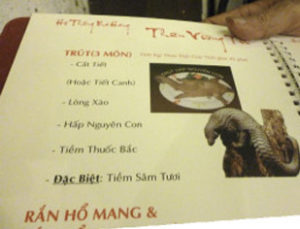 Angela Wing (aka Angelababy) have been enlisted to publicly promote the conservation of pangolins. Ironically pangolins are legislatively protected in most of the countries in which they are found. In spite of such laws and their championing by celebrities, the illegal harvest and trade in pangolin products continues. *
Angela Wing (aka Angelababy) have been enlisted to publicly promote the conservation of pangolins. Ironically pangolins are legislatively protected in most of the countries in which they are found. In spite of such laws and their championing by celebrities, the illegal harvest and trade in pangolin products continues. *
History tells us that the use of wild animals as human food is a very risky proposition. Several extremely dangerous viral diseases of humans have made the jump from wild animal hosts to humans. These include HIV/AIDS, Ebola, SARS, influenza, and of course the coronavirus that has led to the COVID-19 pandemic. Incidentally, although bats are a prime suspect, there is suspicion among some epidemiologists that the COVID coronavirus may have made the jump to humans from pangolins.
As the human global population increases (projected to be 11 billion by the end of the century) interactions with wildlife such as the pangolin will also rise. Dr. Peter Daszak, President of the EcoHealth Alliance and a disease ecologist, has found, “a strong correlation between the risk of pandemic disease and human population density (Nature, 2008). He has also stated that, You can predict very confidently as each year moves forward, we’re going to see more and more diseases emerge.
Consider the recent social and economic misery created by the COVID-19 pandemic. Now imagine a future virus that jumps to humans from a wild animal in a bushmeat market. What if this time the virus is so intractable and mutable that no treatment, no vaccine is effective against it? Best we remember that Mother Nature swings a big bat and, as conservationist Rob Watson has said, she always bats last, and she always bats 1.000.
History also tells us that targeting a species for consumptive purposes often 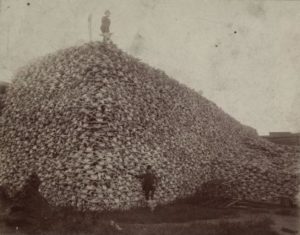 results in a disastrous end for the selected animal. For example, our ancestors have already deprived us of the chance to stand enraptured at the spectacle of a million bison grazing shoulder-deep in an endless sea of big bluestem. When Europeans arrived in North America, an estimated fifty to sixty million, American bison roamed the land. One hundred and forty million acres of prairie grew. By the turn of the 19th century, the bison population had been reduced to around 300 individuals (a decrease of 99.9%). Today only 1% of that original prairie remains.
results in a disastrous end for the selected animal. For example, our ancestors have already deprived us of the chance to stand enraptured at the spectacle of a million bison grazing shoulder-deep in an endless sea of big bluestem. When Europeans arrived in North America, an estimated fifty to sixty million, American bison roamed the land. One hundred and forty million acres of prairie grew. By the turn of the 19th century, the bison population had been reduced to around 300 individuals (a decrease of 99.9%). Today only 1% of that original prairie remains.
Likewise we of this new, more depauperate planet shall never again witness the onward rushing whirlwind that was a passenger pigeon flock. A 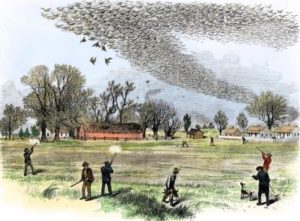 feathered tempest Aldo Leopold called them**. Their original population has been estimated at five to six billion. This is a number so large as to be difficult to
feathered tempest Aldo Leopold called them**. Their original population has been estimated at five to six billion. This is a number so large as to be difficult to
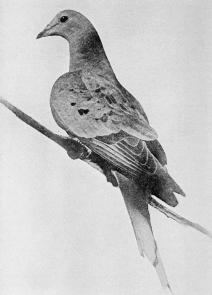
grasp. But, imagine this. If a flock of four billion pigeons flew over at the rate of one bird every ten seconds, it would take over 1200 years for all of them to pass by. Martha, the last surviving passenger pigeon, died in the Cincinnati Zoo in 1914. They are no more.
In the years since my pangolin encounter, nearly 90% of the African elephants in the world have been lost. Ninety-seven percent of the Asian tiger population is gone within the last century. In the United States we have lost 90% of our wetlands, over 90% of our prairies. Nine out of ten of the world’s marine fish stocks have been fully exploited, over-exploited or depleted. Only a third of our planet’s rainforests remain intact. These forests cover only six percent of earth’s surface, yet they harbor 50% of our planet’s biodiversity.
I couldn’t have imagined three decades ago that half of the Great Barrier Reef would now be dead. In fact, warming ocean waters and acidification due to carbon dioxide uptake have bleached half of the world’s reefs. Having a history of such ecological disasters should tell us that the earth’s biodiversity is not boundless. Human activity can cause changes on a global scale. The onslaught is all around us and yet, for the most part, we go merrily on our way.
Is the story of the pangolin anything other than the latest chapter in a long and continuing history of human avarice, ignorance, and absence of concern for the world our children will inherit? It sorrows me to think of a world in which my great-grandchildren might never see a monarch butterfly, may never have the chance to see an elephant in the wild, might never know the wonder of snorkeling over a pristine coral reef.
Given our historical track record, I find it exceedingly difficult to muster hope that we will avoid catastrophic damage to our planet’s biosphere. This is beyond tragic for two reasons. First, our survival depends upon the many so-called ecosystem services provided by the natural world. Many of these are strikingly obvious; production of oxygen by marine algae for example. Other evident functions include regulation of global water cycles, recycling of nutrients, and moderation of a climate conducive to our ability to grow food.
But there is another more subtle reason that our attack on the natural world troubles me so. We humans are, as mythologist Joseph Campbell put it, a biological phenomenon . . . a product of nature ourselves. Right down to the cellular level, there is astounding similarity between us and the other life forms of our world. The very DNA in our genome is an immortal thread connecting us with other living things back through our deep-time, shared evolutionary history.
When we forget our biological origins, we have lost a major portion of what makes us human. The amnesia of our relationship to other living organisms makes it all too easy to justify the destruction of these, our fellow planetary voyagers. Greed, wealth inequality, and our insatiable quest for material goods then drive our destructive course. Our inability to control our own numbers and the resultant exponential growth in earth’s human population exacerbate biodiversity loss. In the end we seem quite prepared to use the earth’s resources, living and non-living, to the bitter finish.
Disconnected from our biological roots, we are no longer fully human. We are automatons, mere robots. We plod unthinkingly onward, blind to the wonder of the Creation all around us. Forgotten in this disengagement is our intimate interconnectedness with earth’s web of life. Could this lie at the heart of much of the social unrest and dysfunction that seems to bedevil us in these times?
We Homo sapiens have lived in small, hunter-gatherer or agrarian societies for over 90% of our existence. During this time we knew intimately natures’ seasons and progressions, the monthly march of the constellations through the night skies, the secretive ways of our furred and feathered brethren. Has the rapid conversion to highly populated, more crowded cultures come too quickly? Have the behavioral norms and societal interactions we developed in small, closely related communal groups been overwhelmed? Is there a correspondence between today’s gathering in societies that are often bewilderingly complex and the host of social and environmental maladies we now experience? If they are not, it seems a rather peculiar series of coincidences.
In 1851 Henry David Thoreau said that, in wildness is the preservation of the world. More and more frequently, I feel I am witness to evidence of how exceedingly prophetic his observation was.
____________________________________________
* data from the IUCN Pangolin Specialist Group
** Leopold, Aldo. 1949. A Sand County Almanac: And Sketches Here and There. Oxford Univ. Press
*** An Open Life: Joseph Campbell in Conversation with Michael Toms. Harper & Row. New York
Photo Credits: Malayan pangolin by the author. Pangolin scales seized in Hong Kong by Anthony Wallace @ Getty Images Pangolin cultural attachments chart by Lori Bentley @ oxpeckers.org Pangolin on a menu in Vietnam by Dan Challender @ IUCN.org Bison skulls awaiting industrial processing. Detroit Public Library @ commons.wikimedia.org Passenger pigeon shoot in Louisiana. Illustrated Sporting & Dramatic News @ commons.wikimedia.org Martha the passenger pigeon by Enno Meyer @ commons.wikimedia.org
